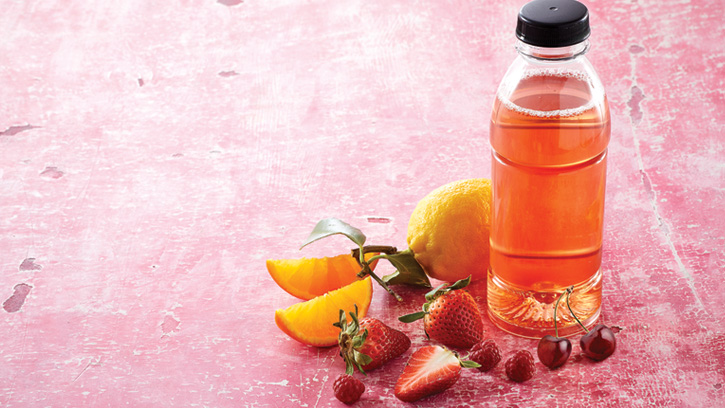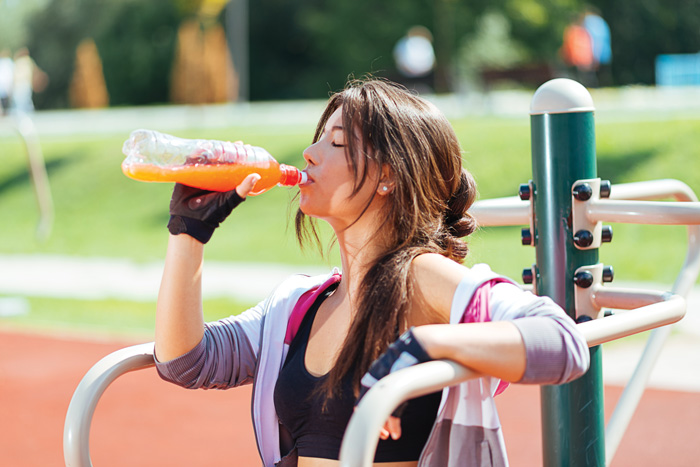Rehydrate and Recover
Nutraceuticals | APPLIED SCIENCE
At this year’s Natural Products Expo West (NPEW) held in March in Anaheim, Calif., an array of sports nutrition products gave a glimpse of trends in this market. Plant-based, of course, has established itself in the sports arena, specifically plant-based proteins. Personalized nutrition also is becoming important to athletes and weekend warriors alike. Not only do products target specific genders and age demographics, but also activity. Nuun, for example, offers products for different levels of hydration based on the activity or goal, such as health and wellness, active lifestyle, or speed of hydration. More products also addressed e-gamers, offering mental acuity and mental stamina and focus for this emerging competitive athlete. An increasing demand for clean ingredients, particularly for energy like caffeine from green coffee beans or green tea extracts, also was evident at the trade show.
While there are many aspects to sports nutrition, such as muscle building, cardio, and endurance, hydration and recovery are two areas that are increasingly discussed and sought by athletic consumers.
Hydration Means More Than Water
Hydration is important for all consumers, but more active and/or athletic consumers need proper hydration as they tend to lose more fluids during physical activity. According to the Academy of Nutrition and Dietetics, dehydration results when athletes fail to adequately replace fluid lost through sweating. Since dehydration that exceeds 2% body weight loss harms exercise performance, athletes are advised to begin exercise well hydrated, minimize dehydration during exercise, and replace fluid losses after exercise.
“Hydration Optimized” is one of Kerry Health and Nutrition Institute’s 10 Key Health and Nutrition Trends of 2023. The company’s research found that hydration has evolved from water or traditional sports drinks to a broad array of electrolyte powders, oral rehydration solutions, or products that make drinking water more exciting, such as flavored sparkling water. According to Kerry, hydration can be bucketed into two main areas: replenishment and active hydration. Replenishment refers to beverages designed to replenish fluids or electrolytes and that have very low or no sugar content. These are products typically aimed for more casual use, like mid- or post-exercise for most of us. Active hydration is related to oral rehydration solution products, which are higher in sodium and glucose to target more rapid rehydration.
Electrolytes are highly sought after in hydration beverages. They help regulate and control the balance of fluids in the body, playing a role in regulation of blood pressure and muscle contraction. The main electrolytes used in sports hydration drinks include sodium, potassium, chloride, calcium, magnesium, phosphorus, and bicarbonate. A good example of this type of hydration product exhibited at NPEW was from SuckerPunch Gourmet Pickle Juice Shooters. Focusing on hydration, but also adding a twist on flavor and convenience, SuckerPunch Invigorating Pickle Juice offers a hydration formula of calcium, magnesium, and potassium to help replenish electrolytes and eliminate cramping.
Rehydrate for Recovery
Muscle synthesis and soreness, inflammation, immunity, and hydration are important to athletic consumers when it comes to recovery after exercise or training. Rehydrating during recovery is important not only to replenish lost fluid and electrolytes, but also helps with muscle soreness. Last year, Arla Foods Ingredients launched a new concept prototype that targeted both rehydration and restoration, combining whey protein and electrolytes. According to the company, a HealthFocus International Global Trend study in 2020 stated that active consumers are heavily focused on rehydration and restoration, with 43% looking for added protein in exercise-related products and 28% favoring those with electrolytes. The company’s Rehydrate and Restore ready-to-drink beverage solution features Lacprodan SP-9213, a whey protein isolate that retains its functionality when combined with electrolytes. The prototype contained 25 g of whey protein in a convenient 500 mL bottle, allowing for claims such as high-protein, and contains electrolytes, low sugar, and low lactose.
Good examples of commercially available hydration products designed with recovery in mind abound. Currently on market shelves, Vita Coco Co. focuses on hydration and muscle with its “harder working hydration” drink, PWR LIFT. The sports beverage combines 10 g of whey protein isolate with five electrolytes: calcium, chloride, magnesium, potassium, and sodium. It also has zero sugar in flavors like lemon lime, orange mango, berry strawberry, and blueberry pomegranate.
Last year, SternVitamin developed four sports nutrition premix solutions for use in drink powders. SternRecovery was one of the premixes created to help with post-workout regeneration, addressing muscle synthesis and soreness, immunity, and hydration. It contains essential amino acids and creatine to stimulate muscle protein synthesis. In addition, pomegranate juice powder, magnesium, and l-citrulline reduce muscle soreness. L-theanine from green tea soothes the mind, while beta-glucan from yeast supports the gut immune system. Finally, electrolytes compensate for mineral losses through perspiration.
Plant-Based Protein Muscles Into Hydration
Protein is also highly sought for recovery to address muscle synthesis because muscles can degrade during strenuous exercise. Whey protein is a top protein for muscle recovery since it contains branched chain amino acids (BCAAs), which are involved in muscle protein synthesis. Some studies also have indicated that BCAAs can help decrease muscle soreness after exercise.
Plant-based proteins are growing in popularity, including pea, soy, rice, and hemp, and are making their way into sports drink products. Several studies have indicated that plant-based proteins, and even combinations of plant-based proteins, can have similar effects to whey on muscle strength and synthesis. One study, for example, compared pea protein, whey protein, and water-only supplementation on muscle damage, inflammation, delayed onset of muscle soreness, and physical fitness test performance during a 5-day period after an intensive eccentric exercise bout in non-athletic non-obese males (Nieman et al. 2020). Eccentric exercises target lengthening of muscle. A high intake of whey protein was shown to mitigate the efflux of muscle damage biomarkers, with the intake of pea protein having an intermediate effect.
In addition to proteins, some interesting research has surfaced that may be important for plant-based recovery products.
Almonds. Another study demonstrated that almond intake supported recovery for adults engaging in unfamiliar eccentric exercise intervals (Nieman et al. 2023). Daily consumption of almonds led to changes in down-regulating inflammation and oxidative stress from working out, allowing the body to recover faster.
The experiment lasted four weeks and included 26 women and 38 men between 30 and 65 years of age. The participants did not exercise regularly at the beginning of the trial and started 90-min long eccentric exercise to induce muscle damage. They were divided randomly into two groups, one group that started supplementing with 57 g of almonds per day, and the other consuming a cereal bar with the same number of calories. When comparing almonds and cereal bars, almond consumption was associated with lower levels of serum creatine kinase—enzymes found in skeletal muscle, heart muscle, and brain that have been associated with inflammation and muscle damage—immediately and one-day post-exercise. The study also showed an improvement in fatigue and tension, retaining leg and back isometric strength, and decreasing muscle damage during the first day of recovery.
Black chokecherry extract. Research also demonstrated that a black chokecherry extract improved the performance and antioxidant status of serum in young football players and induced protective changes in inflammatory markers (Stankiewicz et al. 2023). The double-blind study included 22 male football players (mean = 19.96 ± 0.56), divided into two groups: supplemented and placebo. Before and after a 90-day period of training combined with supplementation (6 g of lyophilized black chokeberry extract), participants performed maximal multistage 20-meter shuttle run tests at the beginning and at the end of the supplementation period.
Tart cherries. Tart cherries are associated with benefiting both sleep and arthritis, partly due to their melatonin and polyphenol content. A meta-analysis of 14 studies looked to determine the efficacy of tart cherry (TC) supplementation on recovery following strenuous exercise (Hill et al. 2021). Tart cherry supplementation had a small beneficial effect in reducing muscle soreness and a moderate beneficial effect for recovery of muscular strength and muscular power. A small effect was observed for both C-reactive protein and Interleukin-6, which are inflammatory markers. Researchers concluded that the consumption of a TC supplement can aid aspects of recovery from strenuous exercise.
Optimum hydration and recovery will always be a part of active and athletic consumer lifestyles. Continued ingredient innovation and research will help create well-received sports drinks and foods in the marketplace.
Learning Objectives
- Current trends in sports nutrition include plant-based, more personalization, and clean ingredients.
- Electrolytes are sought after ingredients in hydration beverages for top athletic performance.
- Recovery focuses on areas such as muscle soreness and synthesis, rehydration, and inflammation.






